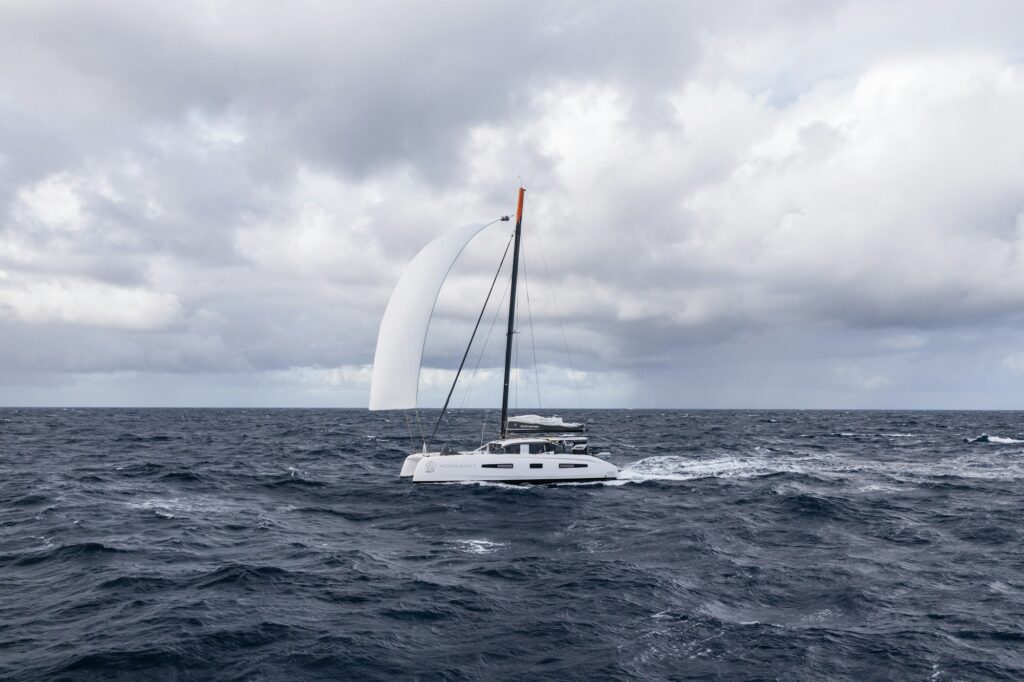
Author: Nikki Henderson
A column, written by Skip Novak, in a recent edition of Yachting World caught my eye. Skip was debating how far is sensible to integrate gender neutrality in nautical language. The sailing world has traditionally been a male only environment. A hundred years ago, the only women at sea were the ships themselves, and mother nature. Therefore, (at least in English) most of our words are male-centric: seaman, seamanship, yachtsman. Answering questions like “should we change ‘man-over-board’ to ‘person-over-board’?” can be contentious, and Skip dug into that conversation. It was a thought-provoking article. And it got me thinking more about communication.
I’d argue that the traditional language of sailing contributes to a glass ceiling. And this is not just gender related. Our exclusive language creates a barrier for any ‘outsider’. All the talk of sheets, shackles and sheaves – tacks and gybes – is completely indecipherable to anyone who has not learnt how to sail. Whilst I don’t advocate for re-writing our entire glossary, I do think it’s important to consider the language we use.
Communication is undeniably a relevant topic for any boat owner. Crews that I coach frequently conclude that communication is the single most important factor in shaping their experience onboard. Good communication keeps people safe, helps manoeuvres run smoothly, and contributes to a positive team atmosphere. Conversely, poor communication can quickly reduce someone to tears, cause confusion and impede safety and effectiveness onboard.
As a future or current boat owner, ask yourself “what kind of boat do I want to run?” Do you want to create a relaxed, controlled, safe atmosphere where everyone feels at ease and belonging? Or do you want to run an intense, loud, and chaotic boat which runs upon a foundation of fear and exclusion? I realise that’s a weighted question – but it’s to highlight that your style of communication bears a lot of weight onboard.
The first job of a skipper is to master communication with oneself. Some days I, like you, might feel tense, or anxious about something, or overwhelmed by the conditions or the demands onboard. How do I keep it calm? There are some tricks: smile a lot; don’t raise your voice; remember to breathe; move your body and shake it out (taylor swift reference intended); stand tall; broaden your stance; develop good internal self-talk: “you’ve got this Nikki / remember this is fun / mistakes are part of learning”. What do these all do? They trick your brain into thinking you are relaxed even if you don’t feel it. And the result? Your crew believe it too: they see you conveying a quiet strength and confidence – and they then feel safe, and calm.
Typically, crews have variations of sailing experience onboard. Live-aboard yacht owners, tend to have guests to stay who are non-sailors. Couples who own the boat often had a strong disparity in confidence and sometimes ability. It’s quite common to fall in the trap of treating those less experienced or outspoken – guests/partner/children – like passengers. Passive passengers are a liability. Everyone onboard should have a basic level of understanding so that they can think independently and be useful in the case of an emergency. Having passengers as opposed to crew contributes to an ‘us-and-them’ divide, rather than a united team. This is less fun. And finally, by resisting some basic coaching, you will unintentionally frame sailing as a mysterious activity to be feared and avoided. Do you want your friends and your children to feel that? Sailing is not rocket science – well, certainly not pulling lines under instruction, steering, hanging fenders and similar beginner level activities.
One of the best levellers that both helps the new sailors feel included, and encourages the experienced sailors to stay humble, is to simplify the language. For example, you might choose to call the furling line the ‘black and white’ line, or the ‘line that rolls up the sail at the front’. Sure – ‘furling line’ is less of a mouthful – but having to always pull it yourself is more work than speaking five extra words. To give you some inspiration, some other examples are: ‘turn through the wind’ instead of ‘tack’; ‘forward running mooring line’ rather than ‘stern spring’; ‘rope that holds the sail up’ instead of ‘halyard’.

The benefits of simplifying language onboard are also practical. Not only do crews tend to have diversity of experience, they also are often culturally diverse. Using language that is more universally understood can help. The previous examples “blue rope that pulls the sail down” rather than “sheet” – will be much easier to translate for someone who cannot sail in the default language onboard. And don’t forget that this can be applied to life down-below too. Using the word ‘toilet’ instead of ‘heads’; ‘kitchen’ instead of ‘galley’; ‘rope’ instead of ‘line’; ‘front and back’ instead of ‘bow/stern/fore/aft’ – will empower your international crew and make them feel at home.
Communication is not just spoken words. We also communicate through body language, action and facial expression. On a practical level, hand signals are a great alternative to speaking when it’s very loud. Any substantial wind can be unbelievably noisy, as are electric winches, windlasses and running the engine. You can see why reefing and parking are often high stress.
Hand gestures are also great for communication with international crews. Even the best multi-linguists can struggle to comprehend a language that is not their mother tongue in high stress scenarios. Hand signals become the universal language on deck.
I adopt the following, and recommend you do the same:
- A fisted hand = ‘HOLD’. If anyone sees this hand signal, pause what you are doing and investigate further.
- An ‘O’ made by pressing the tips of your first finger and thumb together = ‘OK’. This communicates that things are good and OK.
- Rotating the hand and forearm in a continuous circular motion = ‘PULL’. This is an instruction to pull something. The person being instructed can then decide whether it needs a winch or can just be pulled.
- Opening your hand out from a closed fist and simultaneously straightening your arm = ‘EASE’. This is meant to imitate the action of loosening a line and it means just that.
If you are using hand signals to overcome the inability to hear or understand each other, there is a wonderful bi-product: silence. There is no shouting. No frustrated tones of voice. And the result? A quiet, calm and controlled atmosphere. Plus dropping the anchor or parking up in a crowded marina in silence looks very slick!
There is a thread that runs through all these points: a common language. Whatever communication style and techniques you adopt, make sure that everyone onboard is using the same words/signals as each other. It’s more common than you might think – particularly for a couple – to realise that mistakes or disputes keep occurring due to a misunderstanding in language or terminology.



